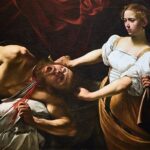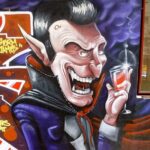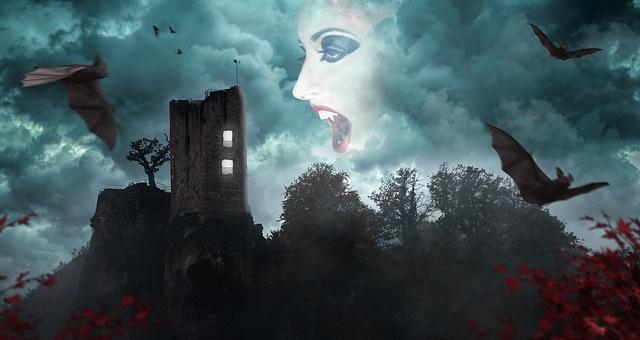
The 19th century in Victorian society brought along with it numerous acute changes and permutations in many areas of life, prompted by progressive scientific discoveries and new revolutionary ideas. To name a few, Charles Darwin introduced his theory of evolution, Thomas Edison presented the life-changing invention of the lightbulb, and Alfred Nobel invented the dynamite.
These tectonic shifts jolted and unnerved a great deal of the population in Britain – many citizens found the notable and rapid transformations in the conservative reality to which they had been used as utterly overwhelming and, consequently, terrifying. These sentiments of dread and anxiety can be observed in important literary texts of that era and other forms of artwork.
This essay will discuss the weighty alterations that 19th-century British society underwent, the ensuing collective sentiments of dismay and alarm, and how these changes were evinced in art. The analysis will rely primarily on Bram Stoker’s iconic novel Dracula and will draw comparisons to other 19th-century artworks expressing the same views and thoughts.
One of the most pressing and alarming issues during the 19th century in British society was the public perception of rampant immigration, and Dracula expresses exactly those anti-immigrant sentiments. Throughout the 19th century, there were several different waves of immigrants flocking into Britain – mostly to London – from Eastern Europe, Asia, and Africa. Jewish immigrants from Eastern Europe who had fled disorder and pogroms poured into Britain in considerable numbers (George, 1965); additional dozens of thousands of immigrants from Eastern Europe migrated to London due to civic unrest in the Russian Empire (Walvin, 1984); the practice of importing workers from India, who ultimately settled down in Britain, became more popular; and there is even also evidence that small communities of African and Chinese migrants were formed in British territories (BBC, 2002).
As a result of all these waves of foreign immigrants – especially Jewish people from Eastern Europe – the British Parliament ultimately heeded the conservative public pressure and introduced the Aliens Act 1905, designed to control and prevent immigrants from entering the U.K. (Pellew, 1989). During that fearful and even xenophobic national atmosphere, Dracula was written and published.
Dracula as the Invading Unwelcomed Immigrant
There are plenty of pieces of evidence to support the claim that Count Dracula represents the unwelcomed immigrant who surreptitiously pervades Britain. Dracula’s direct depiction as a distrustful foreigner begins immediately with Jonathan Harker’s first encounter with him; in fact, Stoker builds up the suspicion toward Dracula indirectly even before Harker’s official face-to-face introduction with him. When Harker initially waits for Dracula in his castle after he traveled through the eerie oddities of Transylvania, he asks himself, “What sort of place had I come to, and among what kind of people?” and contemplates if it is usual “to explain the purchase of a London estate to a foreigner?” (chapter 2) – and thus promptly creating a suspicious view of Dracula, even before his awaited debut in the novel.
After Harker meets Dracula and eats supper, he describes his face as “aquiline, with high bridge of the thin nose and peculiarly arched nostrils” (2) – a very stereotypical description of the “Jewish nose,” even though sociologists have proven that this type of physiognomy is just as common to other people as well (Silbiger, 2000).
Other details also portray Dracula as a crude foreigner: his hair grows “profusely,” and it is “bushy,” his eyebrows are “very massive,” his heavy mustache is “cruel-looking,” and his “sharp white teeth” ominously protrude over the lips (2); this is certainly not a sympathetic portrayal, and it distinguishes Dracula as an uncultured alien and a dubious foreigner by his exteriority.
Another account in the text merges Dracula’s beastly rendering with his infiltration into England, which may illustrate how Stoker views the immigrants who entered Britain: as a ship called the Demeter arrives at the shore of Whitby, an “immense dog” jumps out of it and quickly disappears into the country; it later turns out that this was Dracula who had previously killed the entire ship’s crew and then invaded the region (7). Combined with all other indications, in this episode, perhaps Stoker thus attempts to portray the easiness with which brute foreigners filter through British territories unabated.
Additionally, Dracula’s bestial method of attack and conversion – biting his victims’ throat and leaving “two little red points like pin-pricks” (8) – connotes sexuality, which epitomizes Victorian society’s fear of immigrants assimilating into Britain and consorting with British women who, in turn, would ultimately turn into lewd, uncivilized and uncontrolled creatures like the perception of the foreigner.
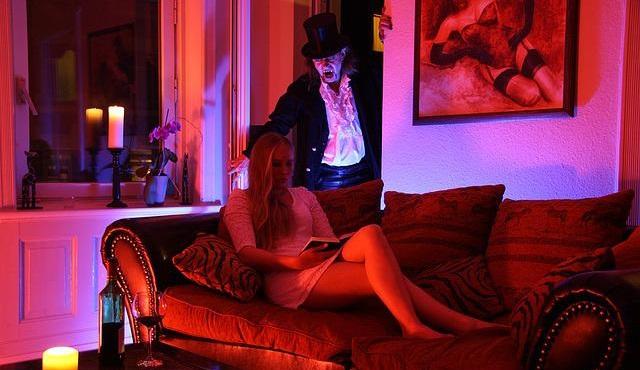
A plethora of hinted details, then, depict the character of Dracula as a dangerous immigrant who nefariously infiltrates the British land and poses a serious threat to the familiar civilized social structure of Victorian society.
Immigration Anxiety and Suspicion in Victorian Society
By no means Dracula was the only conduit of anti-immigration sentiments in Victorian society – it was accompanied by many similar xenophobic expressions in other forms as well. The British journalist and prominent anti-immigration campaigner Arnold White released in 1899 a grim and racist warning against the Jewish community, writing that Jewish people are “proudly separate, racially distinct, and existing preferentially aloof … [A] danger menacing to national life has begun in our midst, is growing, and must be abated if sinister consequences are to be avoided” (White, 1899).
In another bigoted and prejudiced public proclamation near the end of the 19th century, the novelist and editor of the paper The Palace Journal, Arthur Morrison, wrote about the Spitalfields district in London – which was inhabited primarily by poor Jewish immigrants – that it is “swarming with human vermin, whose trade is robbery, and whose recreation is murder” (Morrison, 1889); it is clearly quite a xenophobic depiction and incorporates racist aspects as well.
In addition to the rising tide of immigrants, mostly Jewish, during the second half of the 19th century, the Franco-Prussian War broke out in 1870–71, and consequently, this period was also characterized by a strong sense of anti-German sentiments too. These xenophobic tones manifested themselves in anti-German imagery in the press (Scully, 2012) and in the budding genre of ‘invasion literature’ – narratives that describe how a country is invaded by a different perilous enemy nation that endeavors to destroy it, sometimes successfully. The invasion literature genre famously included George Tomkyns Chesney’s novella The Battle of Dorking (1871), published in the distinguished journal Blackwood’s Magazine, and describes how Britain is invaded and devastated by, not coincidently, a German-speaking nation.
It would be accurate and proper, then, to position Dracula next to many other texts and artworks during the 19th century in Victorian Britain that express their anxious and suspicious regard for immigration and immigrants.
Victorian Society’s Perception of the East
Another set of attributes associated with the character of Dracula relates to his representation as crude and animalistic, which is very similar – if not identical – to the perception of the East in Europe in the 19th century (Lysack, 2008) and very much dissimilar to the accepted Victorian notion of the civilized British figure.
Already in Transylvania, Harker retells that as he was shaving, Dracula barges in and when he sees Harker’s slightly bleeding cut, “his eyes blazed with a sort of demoniac fury,” making a grab at Harker’s throat (2) – distinctly savage and inhuman conduct. Dracula himself shortly thereafter recounts the bloody history of his race to Harker, regarding himself and his kin in an uncivilized and heretical manner: among other things, he equates his people to a “lion” and “were-wolves” with the fighting spirit of the pagan Nordic gods “Thor and Wodin” (3), descriptions that would appall the average Victorian citizen, especially with the discernment that these sorts of foreigners wish to dwell in Britain. For three times after this conversation, the civilized and cultured Harker notes in dread that he observes Dracula crawling down the castle wall as a “lizard” (3, 4), augmenting further Dracula’s chilling animalistic characterization.
Another account in the text merges Dracula’s Eastern beastly rendering with his infiltration into England, which can also demonstrate how Eastern immigrants were perceived in Victorian society: Dracula slyly enters Britain under the shape and form of an “immense dog” as he leaps out of the Demeter upon arrival at the shore of Whitby, and not before he previously slays the ship’s crew (7); Stoker thus revokes any inkling of humanity from Dracula who emigrates unlawfully to Britain.
This is not the only time that Dracula attempts to burst into places as an animal, which further augments the perception of the inhuman creature from the East: as a wolf, he breaks the window in Lucy’s room and scares her mother to death (11), and as a bat, he visits Lucy (8), Renfield (9), and Mina before and after he attacks her (21). Of course, as discussed previously, Dracula also employs a distinctively animalistic and quite ghastly modus operandi when he attacks women and converts them into vampires: he bites their throats and leaves “two little red points like pin-pricks” (8).
Thus Stoker portrays Dracula as a feral creature who might appear as a respectable count at first, but as the text unravels, he exemplifies the stigmatic primitive and savage notions of the East prevalent in Victorian society.
Other Artworks Depicting the East’s Animalistic Nature
Another renowned 19th-century novel also offers a similar brutish representation of the East with its protagonist – Heathcliff, from Emily Brontë’s Wuthering Heights (1847). Although Heathcliff’s origin is not mentioned in the text specifically, the novel does indicate that he has Eastern roots: young Heathcliff is picked by Mr. Earnshaw “in the streets of Liverpool” (chapter 4) during a century that Liverpool merchants were responsible for a considerable portion of the British transatlantic slave trade (Von Sneidern, 1995); he is described as “dark almost as if it came from the devil” whilst repeating “some gibberish that nobody could understand” (4), plainly a bigoted portrayal of an Easterner; and when Nelly attempts to encourage him she asserts that perhaps his “father was Emperor of China, and [his] mother an Indian queen” (7), quite indicative of his speculated origin.
Many commentators and scholars have already elaborated profusely on Heathcliff’s animalistic and savage nature: among other critiques and interpretations, he is compared to a dog that is the “test case” of how humans treat animals (Kreilkamp, 2005); he is described as the representation of “the species of the Gothic monster” (Dodworth, 2013); and he is even referred to as “the cannibal other” (Beaumont, 2004). Hence we see a clear portrayal in this highly acclaimed 19th-century novel as well, very similar to Dracula, of the figure of the beastly “other” from the East as it was perceived in Victorian society.
Probably one of the most critical elements that shaped and branded this sort of oriental perception of the East was visual art. The term “Orientalism” was molded by Edward Said’s Orientalism in 1978, describing the condescending and superior attitude of the West toward the East; indeed, numerous 19th-century famous British Orientalist painters portrayed the East as undeveloped and outlandish, helping to form the crude conception of the East. Among these extolled Orientalist painters, Sir David Wilkie (1785-1841), who painted alleged scenes that he had witnessed during his travels to the Middle East; David Roberts (1796-1864), who was inspired by his travels to the East, chiefly Egypt; and John Frederick Lewis (1804-1876) who sojourned in Cairo for a number of years and painted idealized representations of Eastern life.
The animalistic perception of the East, therefore, was by the very least amplified by different artworks – literary and visual – which probably more imitated the predisposed notion of the East rather than actually relating to human beings from the East realistically due to underlying fears and anxieties of conservative Victorian society.
The Figure of the Femme Fatale
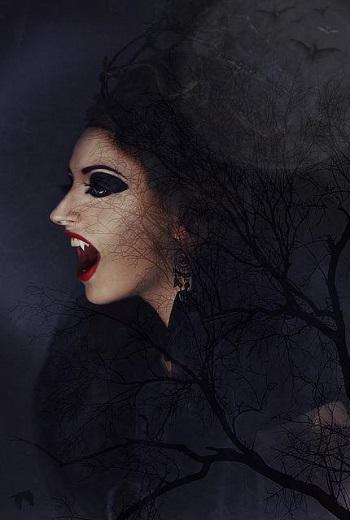
Another widespread social sentiment in Victorian society – that solidly exists in Dracula as well – was the figure of the “femme fatale.” Over the last few decades of the 19th century, the cultural phenomenon of the femme fatale that depicted women as “dangerous, depraved, and deadly” spread through Europe and Britain; it was prodded by many artworks and might have been elicited by the rising first wave of feminism (Menon, 2006).
Dracula conveys this kind of sentiment, too, especially with a side-by-side comparison to the idealized figure of the virginal Victorian woman. The text accordingly illustrates the unmistakable juxtaposition between the ideal of the pure and chaste Victorian woman – as exemplified by Mina and Lucy before her transformation – versus the rampant and promiscuous femme fatale targeted by the foreign Dracula – as exemplified by Dracula’s converted female vampires including Lucy after her transformation. Mina and Lucy embody the model of the desirable Victorian women, even at the expense of their own character; they are both courteous, deferential, compliant, and essentially characterless to the point that they are also utterly interchangeable.
In fact, it is difficult to find just one singular and idiosyncratic attribute that can be ascribed to either Mina or Lucy, which can also individualize and distinguish them as unique, multilayered characters. Mina is an assistant schoolmistress who shapes and reshapes her entire life around her fiancée as she declares that after their marriage, she intends “to be useful to Jonathan” (5), negating her own individuality; she never expresses her desires or impulses, and at times it seems that she lacks any sexuality whatsoever. In comparison, Lucy seemingly begins the narrative from a wholly different position: she is still single and being courted by three different mannerly men about whom she deliberates – certainly a promising basic starting point for a character from which she can grow and develop. Yet, even when she is confounded and asks, “Why can’t they let a girl marry three men,” she immediately backpedals and calls it “heresy,” adding that she “must not say it” (5) – ultimately maintaining the paradigm of the virtuous Victorian woman without any meaningful progress or development.
Unlike Mina and Lucy, the first time that Dracula’s three already-transformed female vampires appear in the text, they are almost instantly sexualized and portrayed as immorally profligate, utterly atypical of the desired Victorian ideal; they are depicted with voluptuous lips that elicit in the lethargic Jonathan Harker “wicked, burning desire” whilst one of them wantonly proclaims to another that “[h]e is young and strong; there are kisses for us all” (3) – a demeanor that would jar the mannered Victorian audience. Lucy also starts to resemble these three female vampires after she herself is transformed by Dracula, to which Dr. Seward refers as a “strange change”; right before she dies, Lucy asks Arthur Holmwood “in a soft, voluptuous voice” to kiss her, unbefitting Victorian comportment which is only prevented due to an intervention of Van Helsing (12). After the group encounters the transformed Lucy in her tomb and before they kill her for good, Dr. Seward notes that her appearance is “like a devilish mockery of Lucy’s sweet purity” (16), indicating that she is now fully altered from the pure Victorian woman to a licentious, malevolent femme fatale in the form of a vampire.
Stoker thus arranges Dracula’s female characters in two categories – the pure and innocent Victorian woman on the hand versus the wanton and corrupt femme fatale – leaving no doubt as to what the adequate and acceptable deportment expected from women.
The concept of the femme fatale was not exclusive to Britain, and throughout the 19th century, it was also common all over Europe, especially near the century’s end. One artistic field in which the femme fatale figure was highlighted repeatedly is painting.
The French painter Gustave Moreau depicted several very well-known femme fatale figures in his paintings, for instance, The Apparition (1874-6) about the biblical character of Salome and Helen at the Scaean Gate (1888) that features Helen of Troy, both of which lay emphasis on the ruination and harm of the femme fatale; Edvard Munch from Norway painted a deadly, seductive woman in Madonna (1892-5) next to a presumably victimized humanoid on the bottom-left corner; Franz Stuck from Germany portrayed a semi-naked Eve with a snake wrapped around her in The Sin (1893) as if to warn against the feminine nature; and Gustav Klimt from Austria who portrayed the biblical character of Judith holding the severed head of Holofernes voluptuously in Judith and the Head of Holofernes (1901), hinting about the tempting and destructive nature of women.
In Britain, the figure of the femme fatale already had roots in the first half of the 19th century. The English poet John Keats depicts a destructive alluring woman in “La Belle Dame sans Merci” (1819) – “The Beautiful Lady Without Mercy,” very foreshadowing – who lures in a knight and ultimately abandons him alone and devastated. In “Lamia” (1820), Keats describes a ruinous serpent-turned-woman whose true nefarious nature is revealed during her wedding ceremony, and thereafter her devoted lover dies. Femme fatale figures appeared on the British stage, too: in the play Salome (1894) by the preeminent artist Oscar Wilde, the protagonist Salome possesses “strong femme fatale traits” as she is characterized by her stubbornness and haughtiness, and she also “shows ruthless egocentrism and disregard for others and does not shy away from (indirect) murder” (Dierkes-Thrun, 2011).
It is clear, then, that Dracula was by no means the only artwork in Victorian society that represented the character of the femme fatale, as it also manifested in visual art, poetry, the theatre, and other texts as well.
The Religion-Science Collision in the 19th Century
Dracula also gives prominence to the 19th century’s rising clash between the old traditional world of religion and the new rapidly-progressing world of science propelled by highly esteemed scientists such as Thomas Edison, Charles Darwin and Nikola Tesla. In fact, there are indications that by the end of the 19th century, “science and religion were in grave conflict and that, as such, science needed to be divorced from religion or non-rationality” (Alvarez, 2013).
Stoker, however, does not attempt to advocate for one side or castigate the other in the novel; instead, he tries to reconcile and even synthesize the two. One casual instance that can demonstrate how the novel endeavors to create an equivalence between religion and science is when Dr. Seward sends reports to Arthur Holmwood about Lucy’s condition in a letter and asserts that due to their friendship, he faces the difficulty of fully examining her, “which not even medical science or custom can bridge over” (9), thus paralleling the two. In a different scene, it is Professor Van Helsing who tries to find some middle ground between the logic and reasoning of what science can explain and the inability to clarify certain occurrences rationally (14):
“Ah, it is the fault of our science that it wants to explain all; and if it explain not, then it says there is nothing to explain. But yet we see around us every day the growth of new beliefs, which think themselves new; and which are yet but the old, which pretend to be young.”
In the excerpt above, Van Helsing offers a religious-leaning view critical to Dr. Seward’s attempts to find scientific logic and reasoning for everything. Yet, shortly thereafter, he also supplements his argument with another claim, this time one that leans toward the scientific:
“Let me tell you, my friend, that there are things done to-day in electrical science which would have been deemed unholy by the very men who discovered electricity—who would themselves not so long before have been burned as wizards.”
Here, in contrast with his prior argument, Van Helsing is critical of religious views that do not accept progress and scientific discovery. Very similarly, Van Helsing later again presents two religious-scientific balancing statements as he ventures to explain the group’s advantages over Dracula: first, he boasts that they “have sources of science,” and then he alleges that all they “have to go upon are traditions and superstitions” (18). As a character, Van Helsing himself represents the exemplary model of religion-science harmonic combination: on the one hand, he is presented right from his first introduction by Dr. Seward as “a philosopher and a metaphysician, and one of the most advanced scientists of his day” (9) who later on treats Lucy and Mina through contemporary means of science and medicine; and on the other hand, he is a devoted Christian whose point of reference incorporates almost always religion, for instance when referring to Dracula as “a blot on the face of God’s sunshine; an arrow in the side of Him who died for man” (18), or his application of superstitious methods to counter Dracula.
The tension between science and religion culminated in the 19th century as many scientific discoveries and ideas – some of which still reverberate loudly to this day – collided with many conventional religious beliefs that had been almost undisputable until then. Yet, even though Stoker does acknowledge this collision in Dracula, he ventures to harmonize between the two discording worlds, mostly through the colorful character of Professor Van Helsing.
Other 19th-century texts and artworks have exhibited the conflicts between religion and science in light of the growing secularization spreading expeditiously during this era. The unprecedented surge of secularism manifested itself already in the middle of the century: in 1851, words such as “secular,” “secularist” and “secularism” first appeared in the British press, and in 1852 it was first regarded in the press as a movement (Holyoake, 1896).
In literature, Charles Dickens – one of the most illustrious writers of the 19th century and in history – published the novella A Christmas Carol in 1843, a magical tale about a stiff man called upon by different apparitions. Many reputable critics and intellectuals consider the novella an utterly secular text: for instance, Richard Kelly writes in his editor’s introduction to A Christmas Carol (2003) that “it was Dickens, above all, who superimposed his secular vision of this sacred holiday upon a welcoming public”; Edgar Johnson, the biographer of Charles Dickens, notes that for Dickens Christmas has no more “than the very smallest connection with Christian dogma or theology” (Johnson, 1951).
In poetry, the eminent English poet Matthew Arnold relates wistfully to the old diminishing religious world and, correspondingly, the progressively secularizing Victorian society of the 19th century in one of the most famous poems of that era, “Dover Beach,” published in 1867: in the third stanza of the poem, the speaker melancholically asserts that the “Sea of Faith” is “withdrawing” and “[r]etreating,” leaving behind the “naked shingles of the world”; thus Arnold expresses his lamentation about the fast modernization of the world, which he sees as advancing forward without the religious faith.
The 19th century initiated a wave of secularism prompted by scientific discoveries and ideas, and as illustrated, this wave was also present in the most recognizable texts of the century – in literature, poetry and the press.
Homosexuality in Victorian Society
The last social permutation in Victorian society in the 19th century to be discussed, which is exhibited in Dracula, is homosexuality. As other critics have noted, the opening chapters of the novel can be read as a deep homosexual desire, which manifests itself with the image of the “Vampire Mouth” (Craft, 1984).
When Jonathan Harker encounters the three female vampires at the beginning of the novel, he observes that he “could see in the moonlight the moisture shining on the scarlet lips and on the red tongue as it lapped the white sharp teeth” (3); in comparison, when Dr. Seward later in the text describes Dracula, he very similarly affirms that his “white sharp teeth, behind the full lips of the blood-dripping mouth, champed together like those of a wild beast” (21). The two similar portrayals of the Vampire Mouth – one of a female and one of a male – blend the familiar gender-based categories together and evoke one coinciding sexual unity.
In another scene at the beginning of the novel discussed earlier, Dracula notices that “blood was trickling over [Harker’s] chin” due to a shaving cut, “his eyes blazed with a sort of demoniac fury, and he suddenly made a grab at [Harker’s] throat” (2); this brief episode can be interpreted subtextually and homoerotically as “Dracula’s desire to fuse with a male” (Craft, 1984). This homosexual desire of Dracula is almost fulfilled shortly thereafter through Harker’s encounter with Dracula’s extensions, his three female vampires, and it is only interrupted at the most climactic moment by Dracula himself, who barges in and shouts at them, “How dare you touch him, any of you? How dare you cast eyes on him when I had forbidden it? Back, I tell you all! This man belongs to me!” (3) – which can be easily understood as a homosexual assertion.
Of course, even if Stoker intended to fuse his text with homoerotic tones, at that time, he could have only hinted about it, as detailed above – overt homosexuality was still outlawed in Victorian society, and forms of homosexual expressions could only be conveyed subtly.
It appears that homosexuality began to become much more salient in the Victorian society of the 19th century compared with previous eras. In terms of official law, in 1861, the British Parliament abolished the death penalty for homosexuality – or “Buggery” – as part of larger comprehensive legislation under section 61 of the Offences Against the Person Act 1861; yet, homosexuality was still considered a crime that could result in imprisonment. In 1885, however, the Criminal Law Amendment Act 1885 was enacted and under which section 11 – dubbed the “Labouchere Amendment” – was employed to prosecute homosexuals more easily.
Under this law in 1895, the famous playwright Oscar Wilde was sentenced and judged to two years of harsh labor after a conviction of gross indecency, i.e. homosexuality; the trial was reported broadly in the British press, spotlighting homosexuality on an unprecedented scale, mostly in hostile regard toward Wilde (Hyde, 1973). In prison, Wilde wrote De Profundis, which elaborates on the rigorous journey that ultimately led him to prison – including his homosexual liaisons – and about which he does not regret: “To regret one’s own experiences is to arrest one’s own development. To deny one’s own experiences is to put a lie into the lips of one’s own life. It is no less than a denial of the soul.” Another notable 19th-century text that explored homosexuality is My Secret Life by the unidentified author “Walter”; published in 1888 in seven volumes, the text deliberates homosexuality and homosexual acts unapologetically and “reveals the confusion and chaos of [Victorian] society, its perversions, and emptiness” (Harmes, 2012).
During the 19th century, the early movement for gay rights was established, and one of the very first activists was the English anthologist and poet Edward Carpenter (Lauritsen and Thorstad, 1974). In “Love’s Vision,” one of Carpenter’s most famous poems, the speaker delicately equates his male lover to God, asserting that “in the region of Equality … He the Eternal appeared”; even though this poem incorporates slightly more explicit pronouncements about homosexuality than in Dracula, Carpenter also strives to conceal the unequivocal homosexual meaning behind ambiguity.
If so, according to multiple literary and legal accounts, homosexuality in the 19th century was still regarded as a sin and a crime; however, it also grew larger in conspicuity and planted the initial seeds for more equality in the imminent future.
In Conclusion
Victorian society sustained and endured multiple types of transformations throughout the 19th century that surrounded almost all areas of life – socially, scientifically, culturally, religiously, demographically, politically, etc. These rapid alterations, even when distinctively pushing toward progress, also resulted in profound anxieties and fears in a conservative society that was not habituated to such expeditious and sharp shifts.
Rising waves of foreign immigration, initial encounters with the unfamiliar exotic culture of the East, surging awareness and consequent apprehension due to feminine independence, exceptional scientific advancement and ensuing accelerated secularization, and mounting attention to same-sex – primarily masculine – relations, were all agents of terrifying uncertainty and alarming perplexity.
One of the places where these momentous metamorphoses found a permanent dwelling is one of the most iconic and memorable novels of the century, Bram Stoker’s Dracula, as well as in other literary works and other types of artworks.
Perhaps this is the key to comprehending the lasting success and familiarity of the novel to this very day: it gives voice – even if just subliminally – to the latent pulse of society and, even more importantly, a cathartic sense of deliverance through fictional expression. In this regard, Dracula and other artworks can exhibit the great contribution of art to society not just as mere means of entertainment or as documented historical records but also as instruments that are part of a more extensive evolutionary mechanism – the one that prompts humanity forward.
Works Cited:
Beaumont, Matthew. 2004. “Heathcliff’s Great Hunger: The Cannibal Other in Wuthering Heights.” Journal of Victorian Culture 9, no. 2, pp. 137-163.
Craft, Christopher. 1984. “‘Kiss Me with those Red Lips’: Gender and Inversion in Bram Stoker’s Dracula.” Representations 8, pp. 107-133.
Dierkes-Thrun, Petra. 2011. Salome’s Modernity: Oscar Wilde and the Aesthetics of Transgression, pp. 35-6.
Dodworth, Cameron. 2013. Illuminating the Darkness: The Naturalistic Evolution of Gothicism in the Nineteenth-Century British Novel and Visual Art, pp. 168-172.
George, Mary Dorothy. 1965. London Life in the 18th Century. Vol. 258, p. 62.
Harmes, Barbara, and Marcus Harmes. 2012 “My Secret Life and the Sexual Economy of Fin-de- Siecle England.” Australasian Journal of Victorian Studies 17, no. 1: pp. 15-26.
Holyoake, George Jacob. 1896. “How Secularism Arose” in English Secularism: A Confession of Belief, Vol. 1. Library of Alexandria.
Hyde, Harford Montgomery. 1973. The Trials of Oscar Wilde, pp. 157-8. Courier Corporation.
Johnson, Edgar. 1951. “The Christmas Carol and the Economic Man” in American Scholar, Vol. 21, No. 1, Winter, 1951, pp. 91-8.
Kelly, Richard. 2003. “A Christmas Carol: Charles Dickens.” Peterborough, Ontario, Broadview Literary Texts.
Kreilkamp, Ivan. 2005. “Petted Things: Wuthering Heights and the Animal.” The Yale Journal of Criticism 18, no. 1, pp. 97-106.
Lauritsen, John, and David Thorstad. 1974. “Socialism and the Early Gay Movement” in The Early Homosexual Rights Movement (1864-1935). New York: Times Change Press.
Lysack, Krista. 2008. Come Buy, Come Buy: Shopping and the Culture of Consumption in Victorian Women’s Writing, pp. 32-3.
Menon, Elizabeth Kolbinger. 2006. “Genesis” from Evil by Design: The Creation and Marketing of the Femme Fatale.
Morrison, Arthur. 1889. “Whitechapel” from the Palace Journal, April 24, 1889.
Pellew, Jill. 1989. “The Home Office and the Aliens Act, 1905” from The Historical Journal Vol. 32, No. 2, pp. 369-385.
Scully, Richard. 2012. British Images of Germany: Admiration, Antagonism & Ambivalence, 1860-1914, p. 100.
Silbiger, Steve. 2000. The Jewish Phenomenon: Seven Keys to the Enduring Wealth of a People, p. 13.
Von Sneidern, M. L. 1995. “Wuthering Heights and the Liverpool Slave Trade,” ELH, 62(1), pp. 171-172.
Walvin, James. 1984. Passage to Britain: Immigration in British History and Politics, p. 62.
White, Arnold. 1899. The Modern Jew, p. xii.
Wilde, Oscar. 2010. De Profundis. Modern Library.
